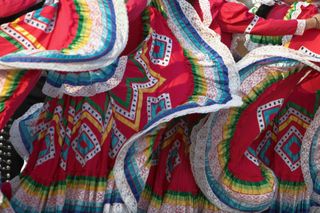Projects
These are the topics I worked on.

From male standard employment relations to female pluralism in employment relationships?
The standard employment relationship (fulltime, permanent and with social benefits) is still dominant in Germany, but not so standard any more. Conversely, atypical employment (temporary, part-time, minimum jobs and self-employed) is widespread. Increasing participation of women and older people comes along with the spread of "atypical" employment. At the same time housholds no longer rely on the male breadwinner model but implement various dual earner models while the number of households with two or more members decreases. Is individual social security warrented by these new employment relations?
Mehr lesen

Social Investments from a Capability Perspective
The European Union has launched in 2013 the Social Investment Package (SIP) in order to “invest in people” and “their capacities”. The SIP paradigm marks indeed a shift in social policy from remedying to shaping and enhancing capabilities – if done well. However, it remains to be seen how the return to social investment is calculated: people fit for the economy or the economy fit for people? The project RE-InVEST (and here) looks at the SIP from a human rights and capability perspective.
Mehr lesen

Childhood, Equality of Opportunity and the Capability Approach
Equality of Opportunity (EOp) approaches belong to the few theories of justice that are concerned with childhood – if only in an instrumental way as the period for establishing EOp. The capability approach (CA) is sometimes called an EOp approach. In contrast to other such approach the CA does not rely on the assumption of a hierarchy of desirable positions but strives at leading a life one values and has reason to value. What follows from that? Is the CA an EOp approach? Is one moment of EOp sufficient or is continuous readjustment of EOp needed? What is the role of childhood?
Mehr lesen

Sustainable consumption in capability perspective
When sustainable development (SD) is seen through the lens of the capability approach, the focus is on the individual. This concerns both the end of SD as individual well-being and the means to SD in terms of individual contributions. One obvious way of contributing to SD for individuals is sustainable consumption. We investigate whether this way of taking part in society's endeavour to secure SD is open to all in a subproject of the third report on socio-economic development in Germany.
Mehr lesen

Sustainability and justice
Sustainability in a broad sense means to enable future as well as the current generation to satisfy their needs (Brundtland-report). However, on the one hand side the theoretical foundation of such a broad understanding of sustainability is still lacking. On the other hand side the capability approach could lend itself for this task but hasn't been used much in this context. The project GeNECA conceptualizes fair sustainable development on the basis of the Capability Approach and tests the conception in two ways: First a set of indicators for sustainable human development is proposed and second the conception is used in case studies of political decision processes.
Mehr lesen

Child Poverty in a Capability Perspective
Child poverty is mostly measured as the share of children living in income-poor households. It would be far more interesting to know how children live. The Capability Approach looks at the doings and beings of people (their functionings) and what they can do and be (their capabilities). However, the CA suggests focusing on functionings in the case of children. Thus, the CA lends itself to measuring child poverty in so far as it looks directly at their lives, but it has to be amended in order to be really applicable to children.
Mehr lesen
Work and the Good Life
mit anderen Lebensumständen das Wohlergehen beeinflusst. Siehe link und link.
What is the relationship between life and work? Work is a part of our life that receives only partial recognition. Some types of work are not counted as such since they are not paid (housekeeping, care, voluntary work). Traditional welfare economics views work first of all as a burden with a negative impact on individual welfare. The Capability Approach allows us to define work as constitutive for a good life. Working affects our well-being in combination with other functionings.
What is the relationship between life and work? Work is a part of our life that receives only partial recognition. Some types of work are not counted as such since they are not paid (housekeeping, care, voluntary work). Traditional welfare economics views work first of all as a burden with a negative impact on individual welfare. The Capability Approach allows us to define work as constitutive for a good life. Working affects our well-being in combination with other functionings.
Dynamics of capabilities
Sen's capability approach in its current version is essentially static. In contrast to its static nature the approach emphasises the process-character of freedom of choice. The modell stops short of linking current choices (from a capability set) to future options (future capability sets). However, drawing this intertemporal link between today's choice and tomorrow's capability set allows to analyse how people learn to choose (instead of taking this ability for granted).
On the interplay of dimensions in multidimensional poverty measures
Poverty measurement usually comprises two steps: identification of the poor with the help of a poverty line and aggregation of individual poverty with the help of a poverty measure. Multidimensionality adds the task of aggregating poverty across dimensions. This is, however, not a step of its own, but rather intermingles with the task of identifying the poor. Are only those to be counted as poor whose achievements are below the poverty lines in all dimensions? Or should we consider everybody as poor who fails in at least one dimension? Counting deprivations instead looks like a good compromise and has many merits in pratical applications. But whether poverty really aggravates with each added deprivation is an open theoretical question.




